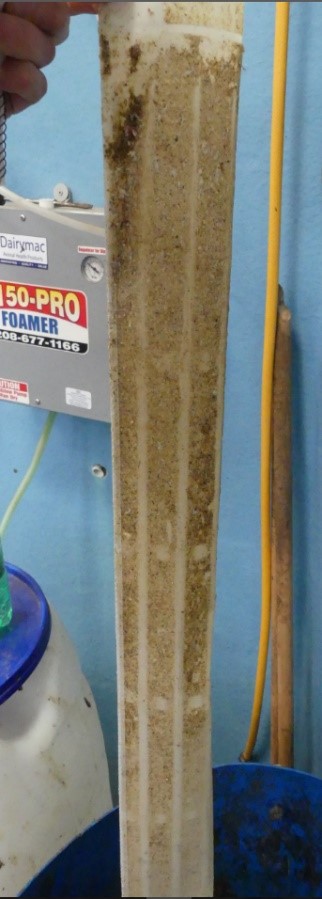Although the main methods of mastering mastitis have been known for a long time, we regularly find certain protocol errors in the milking stall, thereby promoting the spread of mastitis. In this article series, we present the three most common mistakes found in Western European dairy farms.
No premilking
Pre-milking = removal of residual milk from the milk channel before each milking (2/3 teats).
For many farmers, the premarketing of each animal and each milking is a waste of time. They prefer to wait until they see lumps (signs of clinical mastitis) in the filter before they preal to identify diseased animals. Others milk only once or twice with the risk of disturbing the routine of the cows and thus the oxytocin reflex.

The identification of lumps in the milk filter indicates a poor detection of clinical mastitis.
This infected milk increases the number of germs in the milk (see article: "Treat the pathogens in agricultural businesses").
Therefore, it is extremely important to pay attention to the three main advantages of pre-milking (see article "pre-milking").
A) Early detection of evidence of clinical mastitis to treat it as soon as possible.
B) Stimulate the cow and activate the oxytocin reflex, which stimulates good milk delivery.
C) Remove the first infected rays (residual milk) to avoid infection of the tank and the milking system.
